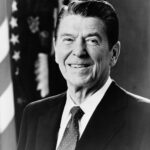What The Chicken Sandwich Wars Teach Us About The Free Market
Brand wars are fascinating manifestations of the free market in action.
From Nintendo v. Sony Playstation to Netflix v. Blockbuster, brand wars show us how consumers benefit when companies fight for our business by attempting to out-innovate each other. As a result, consumers win by having a wider variety of quality goods and services from which to choose.
While the market competition is perpetual, every so often a brand war comes along that is so significant, it defines an entire era of consumer culture.
The Cola Wars, for example, played such a substantial role in pop culture during the 80s and 90s, the incident even earned a shoutout in Billy Joel’s “We Didn’t Start The Fire.”
But today’s ongoing “chicken sandwich wars” have gotten so heated, they may very well replace the Cola Wars as the most competitive and memorable brand war in history.
It all began in August 2019, when Popeyes Louisiana Kitchen introduced their new chicken sandwich.
At first, this didn’t seem like such a revolutionary idea. Fast food chains introduce new items all the time. And a chicken chain introducing a chicken product isn’t the most attention-grabbing.
But this was different. For years, Chick-fil-A had dominated the chicken sandwich market. Without competition in the chicken sandwich industry, they quickly became the third largest fast food chain in the country.
When Popeyes introduced its version of the chicken sandwich, consumers went wild.
Long lines formed outside establishments across the country and customers often waited hours for their chance to try the sandwich. Some had their hopes dashed to find the restaurant had sold out of the coveted sandwich before they even had a chance to make it to the register.
This Popeye’s chicken sandwich phenomenon would have been interesting enough on its own, but the battle that ensued is where the story gets riveting.
Chick-fil-A now had a solid competitor. And we all love some friendly chicken fried competition.
Chick-fil-A claimed to be the “original” and “best” of the chicken sandwiches on Twitter. Popeyes taunted the chain by replying, “Y’all good?” The king of chicken was shaken.
It wasn’t long before Wendy’s entered the fight, responding with, “ Y’all out here fighting about which of these fools has the second best chicken sandwich.”
Like the cola wars, consumers were loving every minute. Not only was it entertaining to see brands going at it publicly in real time, but the former were also winning this fight. With more options available to them, the chicken sandwich market had something for everyone.
The battle on Twitter doubled Popeyes’ followers. This was market competition at its finest.
Apex Marketing Group even estimated that Popeyes received over $65.1 million dollars in free advertising thanks to media mentions and social media hype just within the month of August 2019 alone.
Sales also grew by 9.7 % as Popeyes sold an estimated 1,000 chicken sandwiches per day, accounting for 30% of its total sales.
Two weeks into the launch, Popeyes completely sold out of sandwiches nation-wide.
One Tennessee man was so distraught over the shortage, he even sued the fast food chain for running out of the beloved sandwich.
But the war dragged on with Wendy’s unveiling its own spicy chicken sandwich.
McDonald’s was also hard at work creating their own “southern chicken sandwich.” The McChicken wasn’t going to cut it. To compete in the burgeoning chicken sandwich industry, McDonald’s was going to have to innovate.
Each chain had its own spin on the classic chicken sandwich.. The McDonald’s sandwich, for example, wouldn’t be identical to Popeye’s, but the establishment had long-specialized in being fast and convenient, so it would have to keep that as a major selling point. Taking a lesson from history, Chick-fil-A’s best bet was to stick to their original sandwich.
Summer months are the most important for fast food chains, which made Popeyes timing perfect, but not just for them. The entire chicken sandwich sector was booming across the board and everyone, businesses and consumers alike, were benefiting.
People wanted to try the best chicken sandwich, and they seemed to be sampling from every fast food establishment—including KFC and Zaxby’s.
By the end of the year, $4 billion worth of chicken sandwiches were ordered across the country.
The sandwich’s success was a great lesson in scarcity, as it was only meant to be temporary. But Popeyes seized the opportunity and brought the chicken sandwich back permanently.
On its re-release on November 3, Popeyes sales shot up over 300% in just one day.
But the sandwich had an even larger impact. People are now eating more chicken than ever and the trend doesn’t seem to be going anywhere anytime soon.
Two years after the great chicken sandwich war began, Burger King has just thrown its hat in the ring this summer, introducing its own southern style spicy chicken sandwich. KFC has followed suit introducing their own new chicken sandwich.
Bernie Sanders once commented that too much choice was a negative feature of the free market. But the abundance of choice is at the heart of individual liberty. The freedom consumers have to decide which products and services they buy and from whom or where they choose to buy them is part of the beauty of the market.
Competition in the chicken sandwich industry probably won’t have life-saving consequences like a truly free market in health care. But, every person should have the freedom to select the best possible product that suits their needs–whether it be a car, a doctor, or a chicken sandwich.




